If you are interested in fossils and evolution, you may find this page most interesting.
Bruce Cornet
Crawford, Nebraska
Bob DuBois
Oligocene badlands
40 million years old
Titanothere
Brontotherium
Brontotherium
Hoplophoneus
Hoplophoneus
Daphaenocyon
dodgei
a relative of Daphaenocyon
Daphaenocyon dodgei
Daphaenocyon
hind right foot
Daphaenocyon
skull
Miohippus
skull
Horse evolution

How does evolution happen?
Punctuated versus Gradual
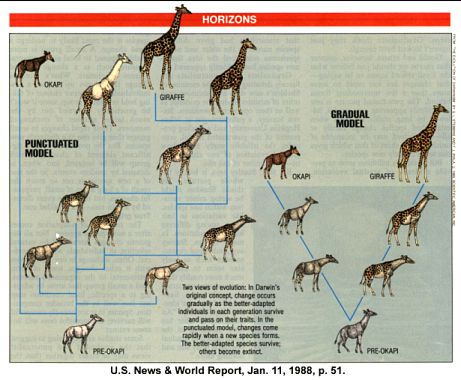
Fossil Evidence for Rapid Orderly Genetic Evolution:
The first detailed fossil record of microevolution with missing links
or
Vertebrate Paleontology
200 million years ago a lake existed in southern Connecticut, eastern North America. It was initially a deep lake, which was formed at the eastern edge of a geotectonic half graben. Many types of fishes took up residence in that lake, finding it a great place to live. However, the lake had a secret, and when it revealed its secret, hundreds of thousands of fish and other animals in the lake died. It is nature's example of pollution and mass fish kills. If you are interested in learning how the history of this lake was uncovered, and its deadly secrets exposed, go to:
Otherwise, read about Cornet's 1969 Oligocene bone expedition:
Back in June of 1969 Bruce Cornet had aspirations of becoming a vertebrate paleontologist. He and a colleague from the University of Connecticut drove out to Crawford, Nebraska in Cornet's 1968 VW minibus in search of big game - the fossil kind. They found so much that his minibus had to have all its wheel bearings replaced after returning to Connecticut. On the way back they stopped at a truck weighing station so that they could determine exactly how much rock they were carrying. The VW minibus weighed in more than 1,500 lbs. over empty weight. All fossils were donated to Yale Peabody Museum in New Haven, CT, and the head of the Vertebrate Paleontology Dept. generously paid for all travel expenses.
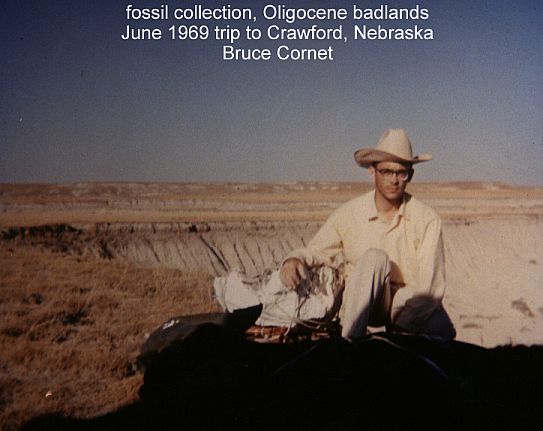
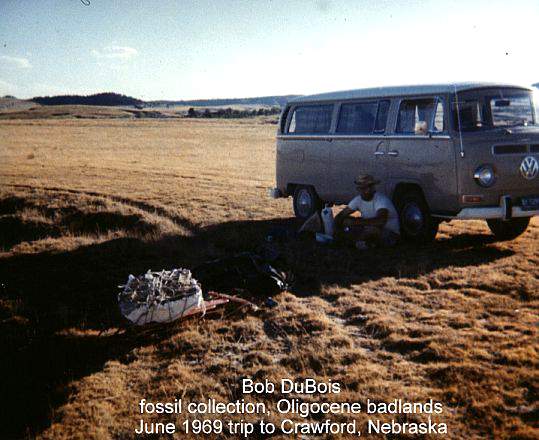
A snow sled was used to transport the largest fossils, still encased in grey mudrock, back to the minibus.
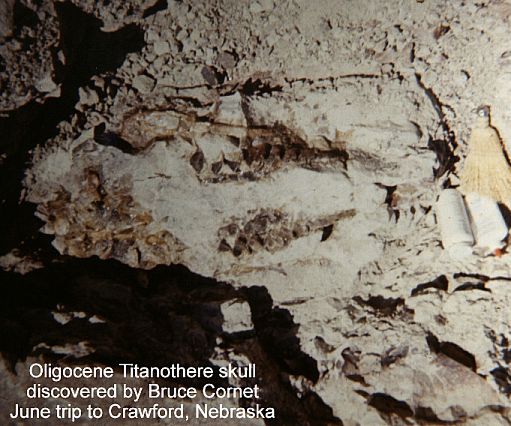
A nearly complete skull of a Titanothere was discovered and brought back. Titanotheres were the size of modern rhinoceroses.
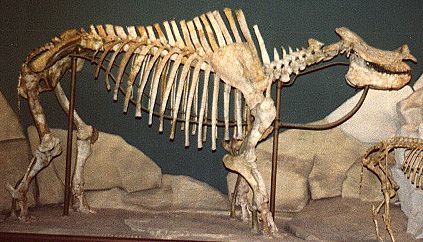
University of Nebraska Museum
Also discovered was a mostly complete skull of a sabre- tooth cat, the ancestor of the Ice Age sabre-tooth tiger.
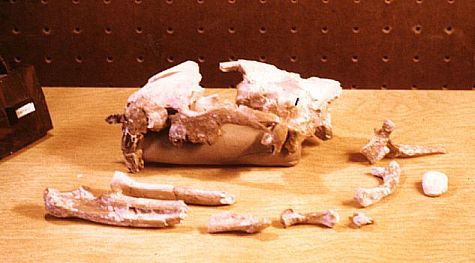
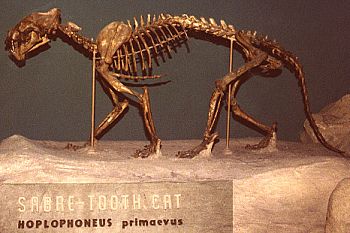
University of Nebraska Museum
The most spectacular discovery was a completely articulated skeleton of Daphaenocyon dodgei, a 40 million year old relative of the dog.
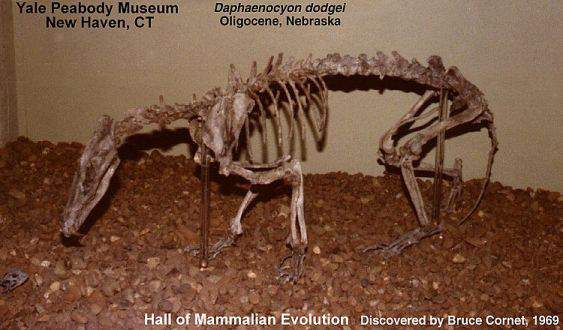
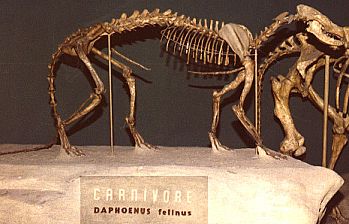
University of Nebraska Museum
Below: As it was found entombed in fluvial sediments where it had been buried during an Oligocene Age flood.
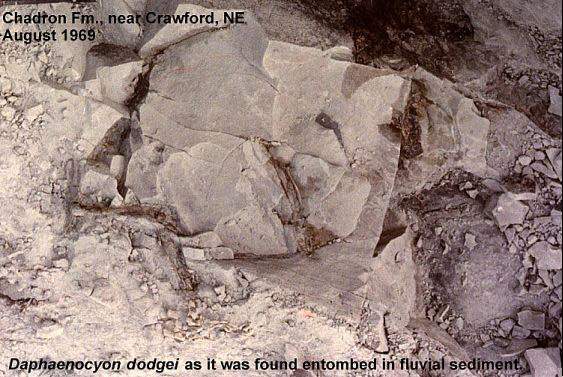
When first discovered, only the bones of one of its hind feet were exposed through erosion. Note how the bones of the foot were beginning to become scattered.
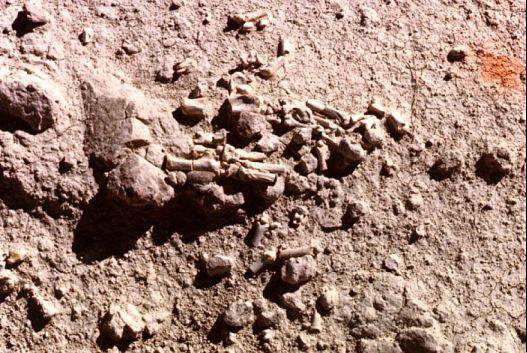
Below: A close-up of the skull, still enclosed by mud (turned to hard mudrock). You can see its front teeth, canine (tip broken off), and eye socket where the soft part of the eye was preserved as a cast, indicating that the mud thickened rapidly or jelled after the flood, capturing even impressions of jaw muscles.
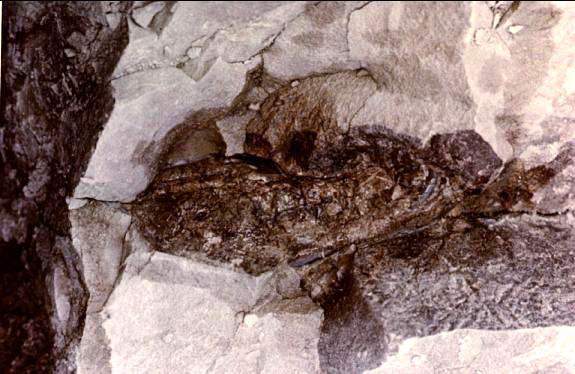
Also found were several skulls and jawbones of Miohippus, the ancestor of the horse.
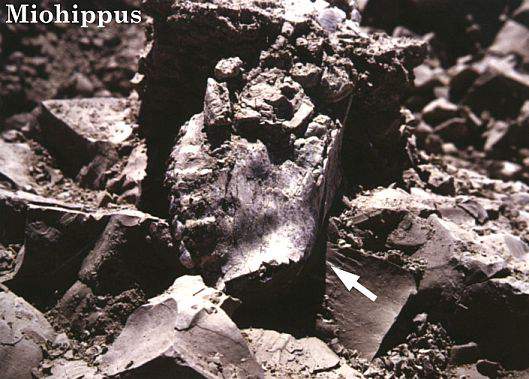
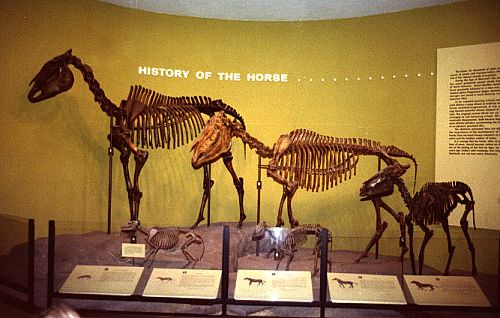
Yale Peabody Museum, CT
More to come.
Send mail to bcornet@monmouth.com with
questions or comments about this web site.
Copyright © 1999 Sirius Onion Works
Last modified: December 02, 2007
